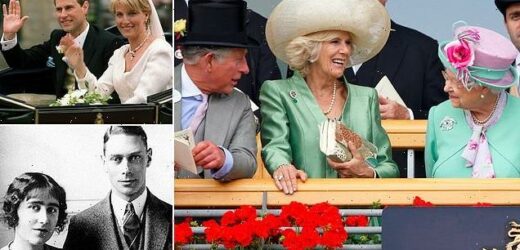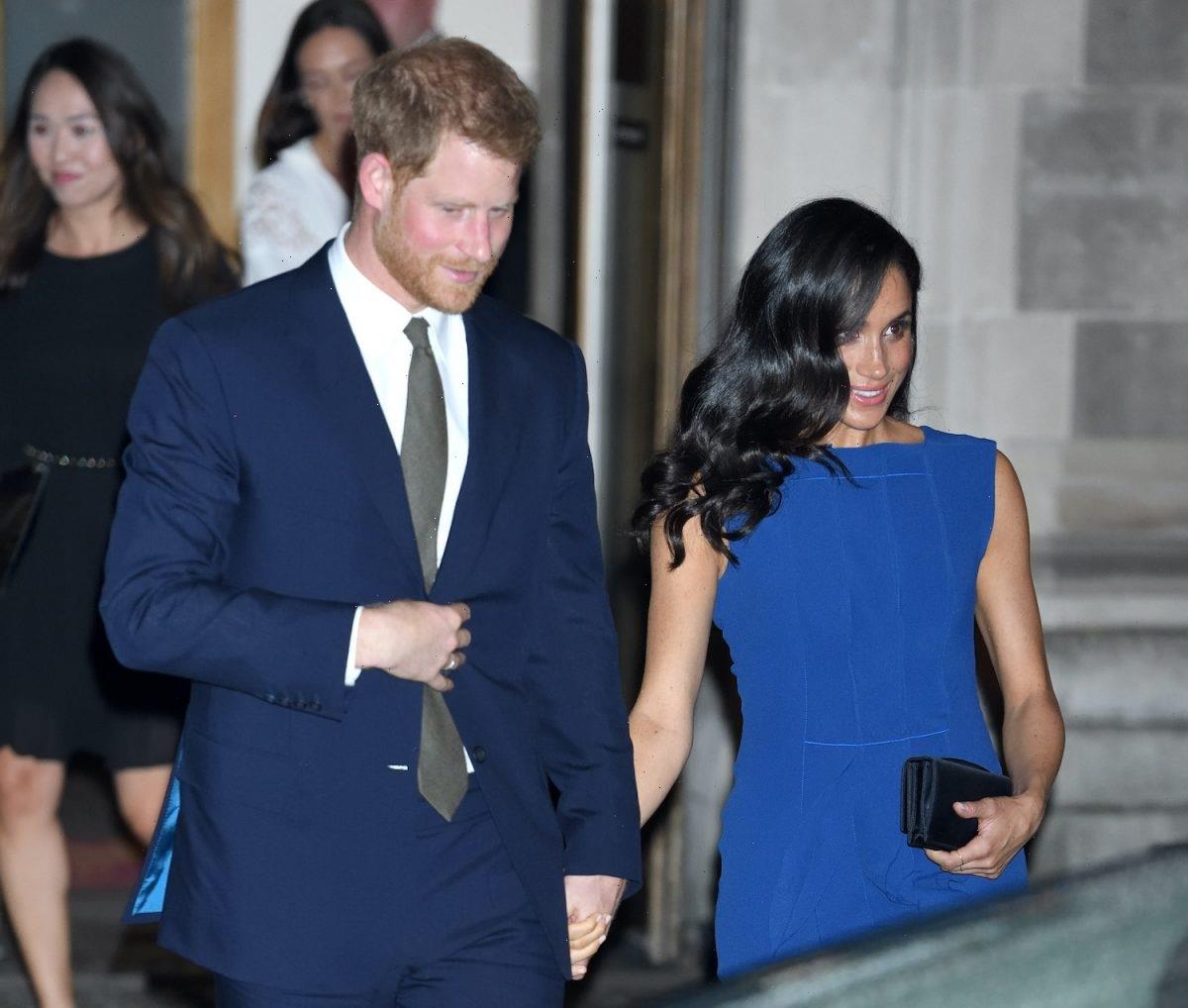ROBERT HARDMAN: The Queen knows how vital it is for a monarch to have a happy and confident consort at their side
This is not a decree. Nor is it a command. Rather, the Queen has called it her ‘sincere wish’ that her daughter-in-law should be recognised and styled as Queen Consort in the next reign.
After 70 years on the throne, Elizabeth II, more than anyone, knows that monarchy always has to be by consent and that she cannot simply dictate to a Government, a Privy Council and the general public how to address the wife of the King in the next reign. However, when the monarch has a ‘sincere wish’, it usually comes to pass.
Let us rewind the clock by four years to April 2018. The leaders of the Commonwealth were at Buckingham Palace for their most recent summit. It would almost certainly be the Queen’s last since she has given up overseas travel and the event moves to a different country each time.
Welcoming the politicians to her home, the Head of the Commonwealth saluted its achievements and called it ‘one of the world’s great convening powers’.
This is not a decree. Nor is it a command. Rather, the Queen has called it her ‘sincere wish’ that her daughter-in-law should be recognised and styled as Queen Consort in the next reign
She then added that it was her ‘sincere wish’ that its members ‘will decide that one day the Prince of Wales should carry on the important work started by my father in 1949’.
Unlike the headship of the Armed Forces or the position of Supreme Governor of the Church of England, the Commonwealth is not hereditary.
Sure enough, two days later, all 53 leaders announced – unanimously – that they had indeed decided to endorse Prince Charles as the next Head of the Commonwealth.
This weekend’s Accession Day ‘wish’ is just the latest example of the Queen ensuring the smoothest possible start for a new reign which, as she well knows, will place great demands on her eldest son when he becomes the oldest heir in history to inherit the throne.
It all comes under the heading of what Palace staff refer to as ‘transition’. We are in the wholly uncharted territory of having an active monarch in her tenth decade. The other crucial element in this weekend’s announcement – entirely eclipsed by the line about the Queen Consort – is that the current Queen Regnant has no intention of stepping down (on the basis that her 21st birthday pledge and her Coronation oath were for life).
So, sensible adjustments will continue to be made periodically, on a common sense, case-by-case basis. There is no textbook or precedent for this situation. So the Palace is not constrained by dusty vellum or tradition in this regard. It can adapt at will.
Hence, the fact that tomorrow it will be the Prince of Wales who is holding the investiture at Windsor Castle, rather than the Queen (who has not invested anyone since knighting Captain Sir Tom Moore at the height of the pandemic).
It is why it is now the Prince of Wales who lays the nation’s wreath at the Cenotaph on Remembrance Sunday. His overseas tours now, more than ever, bear all the trappings of a state visit even though he is not a head of state.
Prince Edward and Sophie are pictured above on their wedding day
The Queen is transferring duties without transferring power or auth-ority – and will continue to do so.
No heir to the throne will have such a gargantuan act to follow when the dark day comes. The last thing which the future King Charles needs is a guessing game, or an undignified public debate about what his wife should be called.
The Queen wants to ensure that, like the issue of the Commonwealth, it is one less thing he will have to worry about.
The fact of the matter is that the Duchess of Cornwall would have become Queen anyway, according to both English and Scottish custom and common law dating back a thousand years.
The wife of a king is always a queen, just as the wife of an earl is always a countess. At issue was a question of labelling. In theory, King Charles would have been perfectly entitled to say that he was calling his wife ‘the Queen’, instead of ‘the Princess Consort’ which had been the plan up to now.
In practice, it would have been impossible for him to do so without noisy and damaging accusations of self-interest. It was going to require the face-saving intervention of an authoritative third party, notably the Prime Minister – preferably supported by the Leader of the Opposition.
The monarch has now conveniently ensured that there will be no need for political involvement.
Until this weekend, the longstanding Palace position had been the ‘Princess Consort’ solution. Announced at the time of the prince’s marriage in 2005, this had been deemed an acceptable compromise at a time when Britain was coming to terms with the idea of a future king being both divorced and seeking remarriage to a divorcee.
If it was an unusual arrangement, then so was the fact that the Prince of Wales’s new wife was not the Princess of Wales. That, however, would not only have upset the legion of fans of the previous princess but would have been an intolerable burden on the new one.
The Queen has also resolved the tricky issue of the duchess’s future royal style. She is currently ‘HRH’. A queen is automatically ‘Her Majesty’. However, could a ‘Princess Consort’ also be ‘Her Majesty’? Or would she have to remain ‘HRH’? No one seemed to have the faintest idea. The question of royal styles and titles bedevilled the Duke of Windsor’s relationship with his family for the rest of his life. Now, that debate is irrelevant.
The monarchy is perfectly capable of adapting ‘rules’ which rest upon convention and common law rather than statute. A similar example was the announcement, buried amid all the other details on the day of Prince Edward’s wedding, that he would become the Duke of Edinburgh following the death of both his parents.
The Queen Mother and George VI are pictured above
What this weekend’s announcement has done is simply to reset the situation to the time-honoured default position: the King’s wife is the Queen. In doing so, Elizabeth II has done the whole institution, as well as her son and his ‘darling wife’, a very great favour.
Royal and heraldic Kremlinologists were intrigued a month ago when it was announced, along with the other New Year Honours, that the Duchess of Cornwall was to be made a Lady of the Order of the Garter. Other royal ladies not born into the Royal Family, including the Queen Mother, had to wait until their husbands were on the throne to enjoy this ancient honour.
Yet here was the Queen bestowing the Garter on the Duchess of Cornwall ahead of time, as it were. It was a very clear implicit sign of her respect and admiration for her daughter-in-law.
This weekend’s endorsement now makes that explicit. She has seen how the duchess has thrown herself wholeheartedly into issues such as improving literacy rates and combatting domestic abuse.
She has also noted how the duchess has endured all the brickbats and the downsides of royal life without complaint but with good humour. They share a love of dogs, horses and the outdoors. Both are stoical and practical.
Above all, the Queen remembers how important it is for a reigning monarch to have a happy and confident consort at their side. To have one who is deprived of the rights and courtesies afforded to every single one of her predecessors would not only be a snub. It would certainly not be conducive to a happy monarchy at a time when it needs all the support it can get.
Within the Royal Household, the announcement will be very warmly welcomed. Among the Queen’s staff, as well as her own, the duchess is a very popular figure, unstuffy and easygoing while still maintaining the bearing and dignity of royalty. Easier said than done.
However, there still remain certain unknown aspects to this affirmation of the duchess as future Queen Consort.
To read some of the responses to the Queen’s announcement, many people have assumed that the Queen wants Camilla to be styled and addressed as ‘the Queen Consort’. Yet ‘Queen Consort’ is a job description, not a form of address. It is like ‘Monarch’. All recent Queen Consorts have been called either ‘the Queen’ or ‘Queen’ plus their Christian name.
At the coronation of George VI, his wife was formally styled ‘Queen Elizabeth’ in all the ceremonial, on the invitations and in the order of service. Ditto Queen Mary and Queen Alexandra. No one called them ‘the Queen Consort’.
So, surely, the duchess will be known as ‘Queen Camilla’? That is what custom, convention and precedent would dictate.
Surprisingly, perhaps, royal staff were unable to confirm that yesterday. ‘We’re not going into that at this stage,’ says one. For now, the Palace is content to have dealt with the issue of status. The issue of labelling, however, is still not yet fully and finally resolved.
However, once again, Elizabeth II has shown her capacity for judicious, pre-emptive action for the good of an institution she has served impeccably for longer than anyone in history.
Source: Read Full Article





